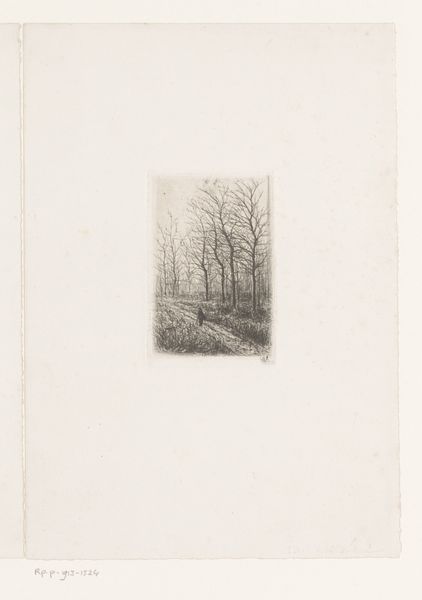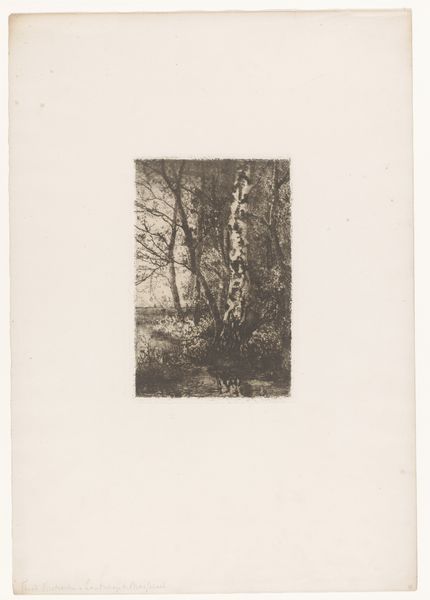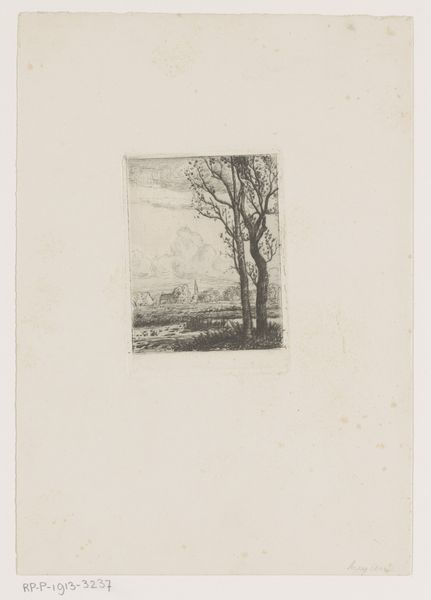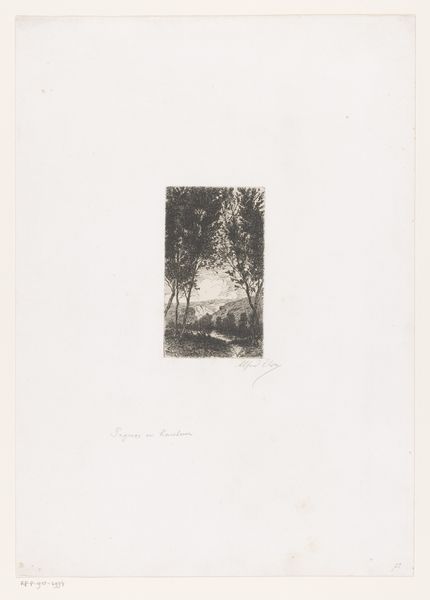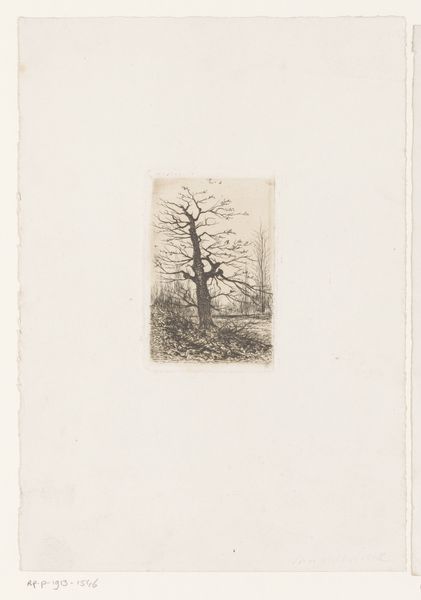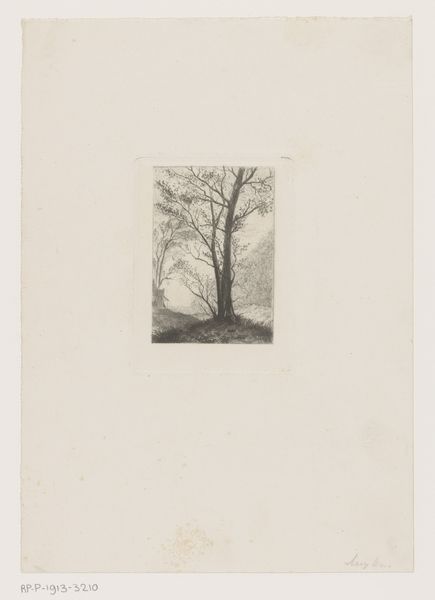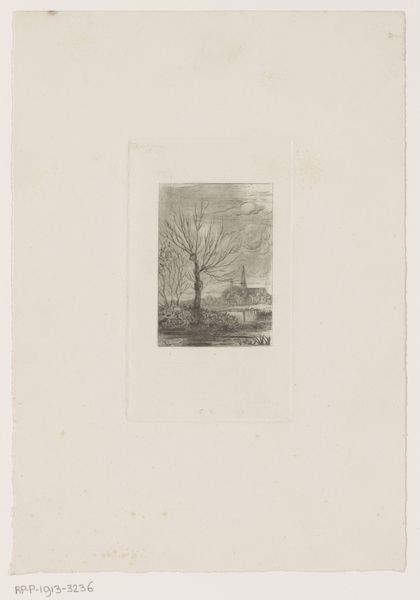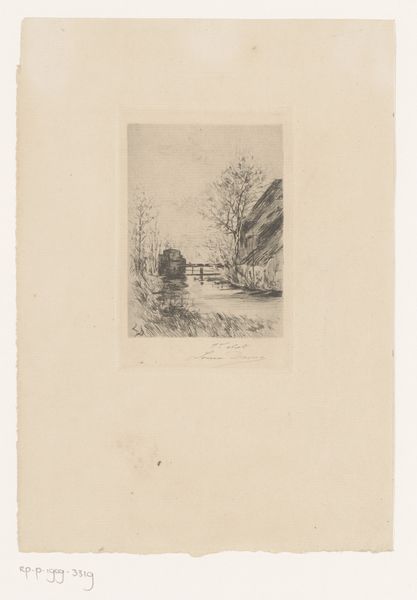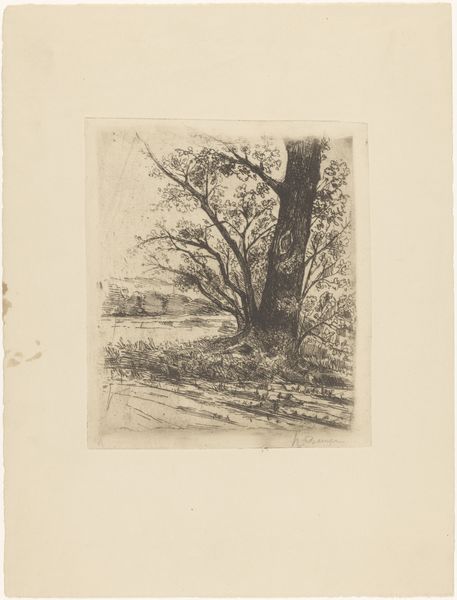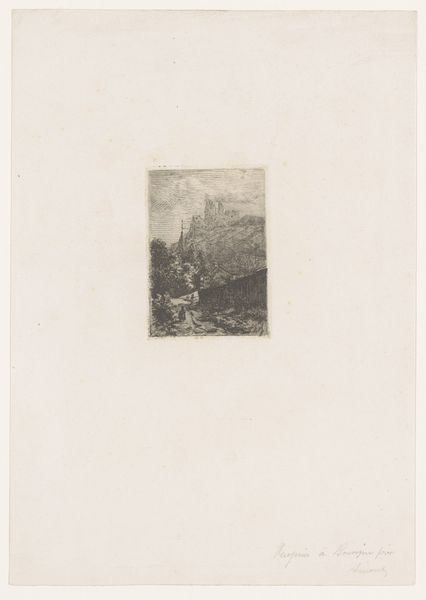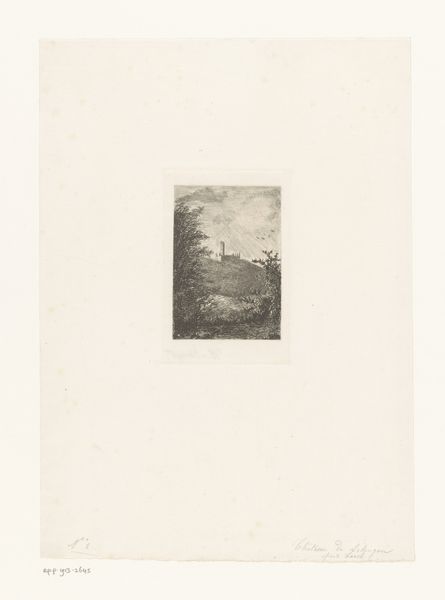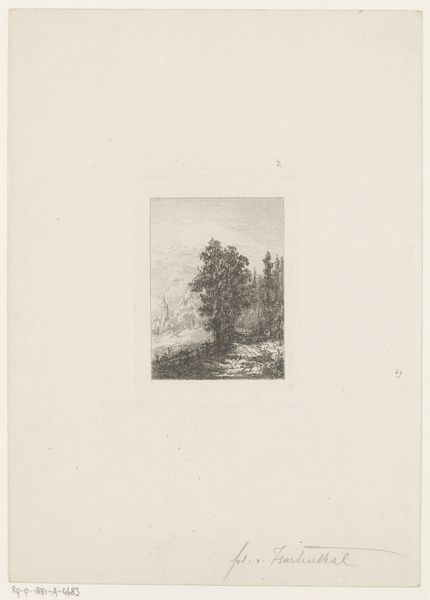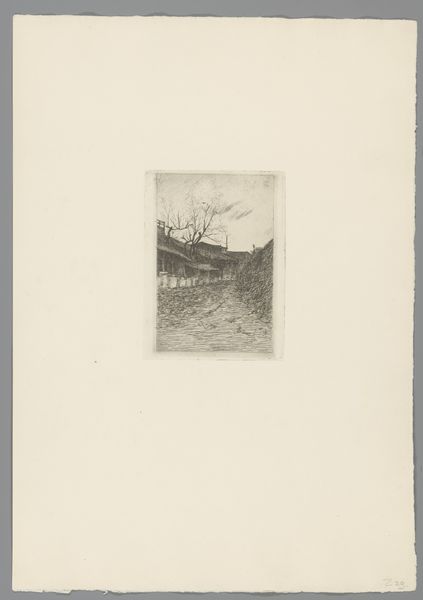
drawing, print, etching
#
drawing
# print
#
impressionism
#
etching
#
landscape
#
road
#
realism
Dimensions: height 120 mm, width 80 mm
Copyright: Rijks Museum: Open Domain
Editor: Here we have Theodoor Hannon's "Figure walking along a country road past a barn," an etching from 1875 currently housed at the Rijksmuseum. It's such a small, quiet image, almost melancholic. What can you tell me about this work? Curator: Well, looking at this etching through a materialist lens, I’m immediately drawn to the process itself. Etching, as a printmaking technique, allows for the reproduction of images, opening up access to art for a broader audience. Consider the socio-economic implications: who was producing these prints, and who was consuming them? How did the relative accessibility of printmaking as a medium influence the artistic landscape of the late 19th century, and perhaps challenge established hierarchies of artistic mediums and consumerism? Editor: That's interesting. I hadn't considered the printmaking process as a form of democratization. Curator: Exactly! And look closer at the subject matter – a rural scene. How does Hannon portray the labor and lives connected to that rural landscape? Does he romanticize it, or offer a more realistic view of working-class existence? Think about how this scene reflects broader shifts in labor, consumption, and urbanization in the late 19th century. Editor: I see your point. It makes me think about the rise of industrialization and the changing relationship between people and the land at that time. Is this etching trying to capture a disappearing way of life? Curator: Perhaps. Or perhaps it's highlighting the *reality* of that life for those who lived it. Now, looking at the lines created by the etching needle, how do you see his technical process reflecting, or even shaping, the social message embedded in this image? What kind of labor went into making the etching, and how is that labor evident in the final print? Editor: That’s a perspective I hadn't fully appreciated. I was caught up in the aesthetics, but you've shown me the importance of understanding the context and production to grasp the deeper meaning. Curator: Precisely! By considering the materials, production methods, and social circumstances, we gain a more profound understanding of the work. Hopefully, this discussion opens our eyes to question artistic narratives.
Comments
No comments
Be the first to comment and join the conversation on the ultimate creative platform.

